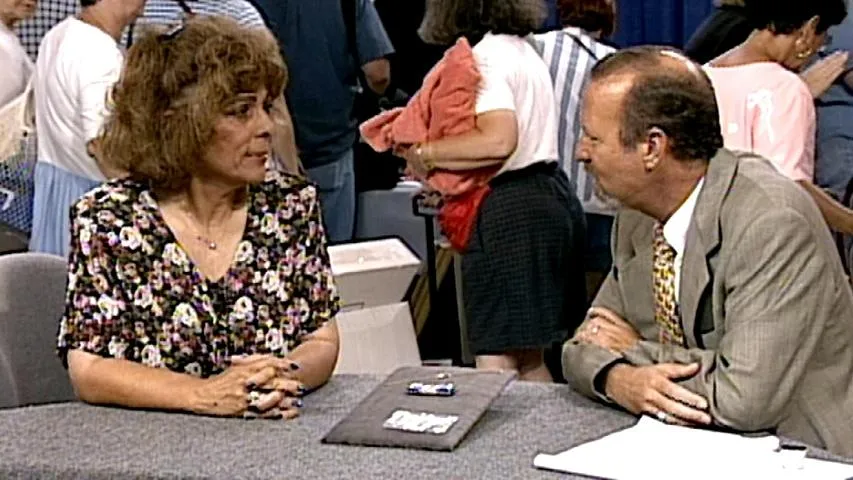GUEST: I've had it probably almost 20 years. My wife brought it home one day. She bought it from a lady she knew in town. And we just use it as an umbrella stand. She didn't really like the color that much, so we just kind of tucked it away.
APPRAISER: The color's not very likeable. In fact, do you mind if I scrape away at it a bit?
GUEST: Go ahead and try it.
APPRAISER: Because what happens is this really nasty green that's on it yields to this robin's egg blue, which is a color Van Briggle was very well known for. Furthermore, the bottom of this pot, which has his AA mark. And it also has Van Briggle. That looks like 1900, it's really 1906. Yeah, it'd have to be because this shape number, which is 497...he hadn't made his 400th shape in 1900. But when I saw the bottom, that was when I really knew this was an early Van Briggle pot. This is really the largest dated piece of Van Briggle I've seen. He died in 1904, but Anne, his wife, stayed with the company until 1912, when she sold it to some businessmen. And so the best time to have a piece of Van Briggle is prior to his death because the master himself was there. He studied under Rodin in Paris, as did his wife, Anne. He was a very famous ceramic sculptor who had worked for the Rookwood Company. But, if you can't have something made before 1904, then you should have something made before 1912 when Anne was there. So this is a monster, it's a very rare form. It's early enough, and so I was, like, really tickled to see it. Believe it or not, it's a $10,000 pot.
GUEST: Oh, that's wonderful. That's a lot more than we thought.
APPRAISER: And there's so much Van Briggle that's worth very little to nothing. One in 5,000 pieces is worth that kind of money. So this is really quite extraordinary.
GUEST: That's really great.
APPRAISER: Keep the umbrellas out of it.
GUEST: Yes, we will, definitely.



